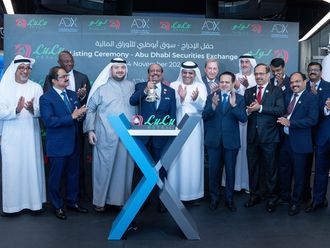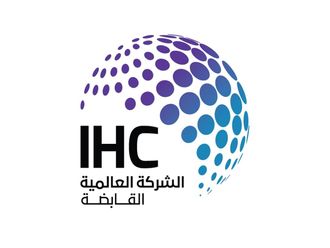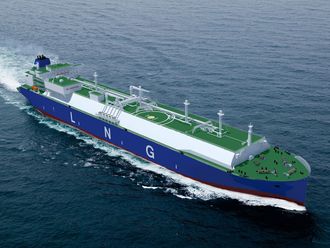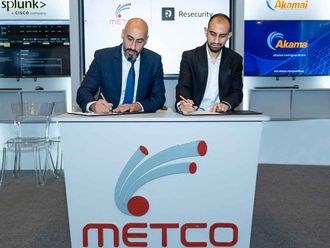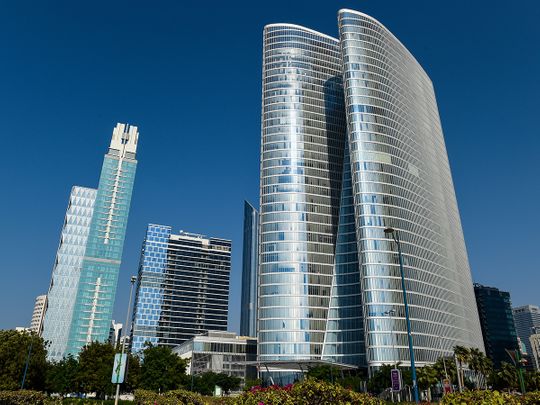
Abu Dhabi's $1 trillion wealth fund is embracing a more scientific approach to investing, leaning more on its own quant team to speed up decision-making as it seeks to bolster returns.
Abu Dhabi Investment Authority - ADIA - is using a 125-person division of data scientists to guide in-house investing, officials at the fund said in rare public comments to Bloomberg News. As part of the broad changes, it's also putting money more rapidly in private credit and has continued to ramp up allocations to private equity.
In addition, ADIA is working with a wider range of hedge funds offering everything from long-only bets to quant wagers, although its overall exposure to that sector won't necessarily increase.
The changes haven't previously been disclosed and mark a shift from the days when sovereign funds like ADIA were more focused on liquidity in the portfolio or conservative investments like government bonds and real estate. Given ADIA's size - it's the biggest Gulf wealth fund and the world's fourth-largest - even small tweaks can reverberate through the global financial ecosystem.
"The key driver for the important changes we've made in recent years is that the external environment has changed," said Jean-Paul Villain, director of the fund's strategy and planning department. "There are now fewer market inefficiencies, traditional asset class boundaries are blurring, and opportunities are shorter-lived and require faster execution."
ADIA is one of several Abu Dhabi sovereign entities that together wield almost $1.7 trillion in wealth, according to consultancy Global SWF. That's helped the emirate attract international heavyweights ranging from Goldman Sachs Group Inc. to Brevan Howard Asset Management LLP and Ray Dalio's family office.
Like many other wealth funds, ADIA closely guards its investment strategies. It was set up in 1976 to invest the emirate's surplus energy revenues, diversify its economy and prepare the United Arab Emirates' capital for life after oil.
Executives have been working behind the scenes on the transformation for five years. They first started to discuss plans to transform the fund's strategy at ADIA's Abu Dhabi headquarters, a skyscraper with views of the Persian Gulf, at the height of the pandemic.
The fund has already been a prolific investor, and was one of the backers of Bobby Jain's high profile hedge fund startup, Bloomberg News reported at the time.
In the first three quarters of the year, ADIA and Abu Dhabi's two other main funds combined invested $36 billion broadly, according to data from Global SWF.
Further glimpses of the changes afoot at ADIA are present in the expansion of its in-house science lab, including a recent hire - Naveed Malik from New York-based multi-strategy hedge fund, Millennium Management.
Malik was hired for the fund's quantitative research & development team, which boasts experts in artificial intelligence, machine learning, big data and high-performance computing. That division's analysis now helps spot opportunities quickly and invest cash faster.
"We're using our increased data and scientific skills to assist the senior investment team to make dynamic allocation decisions," Villain said. "This means we're faster at changing our equity exposures to capitalize on time-bound opportunities, for instance in certain sectors or geographies."
The changes are already having an impact.
Case in point: the booming $1.7 trillion private credit market where ADIA has been making inroads through a series of investments. The fund boosted its exposure to real estate private credit fund Cheyne Capital in March. It's also committed $1 billion to a new vehicle set up by Barclays Plc and AGL Credit Management.
Those forays are the result of its new-found ability to have different divisions move more quickly, at scale and with fewer restrictions than previously. "We have been able to quickly scale into private credit while conditions are favorable, without adopting a one-size-fits-all approach across asset classes," said Hamad Shahwan Aldhaheri, executive director of private equities.
While the fund doesn't disclose how much money it's plowed into different asset classes, Global SWF estimates ADIA's private markets investments have doubled in five years to $209 billion. It has now emerged as "one of the most aggressive allocators to alternative asset classes," said Diego Lopez, who's head of the research consultancy.
Hedge funds
Those changes also mean that ADIA is now investing across a broader range of hedge funds today than previously, mostly because its equities department is doing more in this area than before.
That division now has different and higher return targets so it is working with managers offering equity and equity-related long-only, long-short, quant and market neutral strategies, executives said.
Moving more quickly also means wielding more control over investment decisions.
In the "core portfolio department" which manages ADIA's passive equity and fixed income assets, more assets are being managed internally rather than relying on external providers. The proportion of internally-managed assets stands at 64 per cent today from 55 per cent two years ago.
The science lab
At the same time, ADIA has created new departments, consolidated others and built its middle and back office capabilities. The change was driven by what it calls total portfolio management, a switch from the fund's previous approach when each department had its own targets.
With the reforms, the fund also changed the way it benchmarks its own results, although it doesn't announce returns publicly.
The fund is moving away from a mostly relative return focus to using many more absolute and total return elements to assess performance internally. As a result, outperforming a benchmark is no longer the only measure of success for different departments.
"Today, we can view the total portfolio in a more granular way and through different lenses," said Dhaen Al Hameli, who's executive director of ADIA's core portfolio department.



